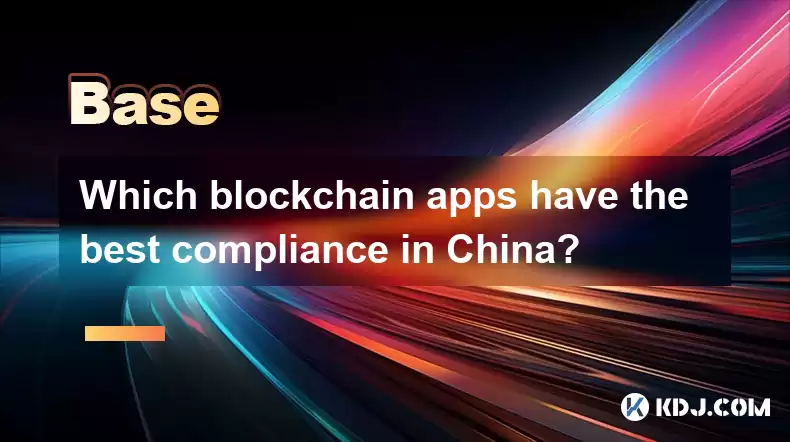-
 Bitcoin
Bitcoin $112400
-1.07% -
 Ethereum
Ethereum $3409
-3.27% -
 XRP
XRP $2.784
-6.60% -
 Tether USDt
Tether USDt $0.9997
-0.03% -
 BNB
BNB $739.3
-2.09% -
 Solana
Solana $158.0
-2.90% -
 USDC
USDC $0.9998
-0.02% -
 TRON
TRON $0.3213
-0.94% -
 Dogecoin
Dogecoin $0.1929
-5.01% -
 Cardano
Cardano $0.6974
-2.82% -
 Hyperliquid
Hyperliquid $36.69
-2.31% -
 Sui
Sui $3.327
-4.80% -
 Stellar
Stellar $0.3672
-5.18% -
 Chainlink
Chainlink $15.65
-3.07% -
 Bitcoin Cash
Bitcoin Cash $525.0
-1.68% -
 Hedera
Hedera $0.2291
-6.00% -
 Avalanche
Avalanche $20.91
-2.96% -
 Ethena USDe
Ethena USDe $1.000
0.00% -
 Toncoin
Toncoin $3.520
-1.12% -
 UNUS SED LEO
UNUS SED LEO $8.968
0.14% -
 Litecoin
Litecoin $105.7
0.26% -
 Shiba Inu
Shiba Inu $0.00001181
-1.79% -
 Polkadot
Polkadot $3.492
-2.08% -
 Uniswap
Uniswap $8.800
-3.10% -
 Dai
Dai $0.9999
-0.01% -
 Monero
Monero $289.9
-3.17% -
 Bitget Token
Bitget Token $4.243
-1.27% -
 Pepe
Pepe $0.00001006
-3.67% -
 Cronos
Cronos $0.1248
-5.68% -
 Aave
Aave $249.7
-2.50%
Which blockchain apps have the best compliance in China?
China's evolving blockchain regulations prioritize data privacy, AML/KYC, and licensing, making perfect compliance elusive. Domestic, permissioned applications aligned with government initiatives fare better, but rigorous oversight remains.
Mar 07, 2025 at 08:55 am

Key Points:
- China's regulatory landscape for blockchain applications is complex and constantly evolving. No blockchain app boasts perfect compliance, as the legal framework is stringent and interpretations shift.
- Compliance focuses heavily on data privacy, anti-money laundering (AML), know-your-customer (KYC) regulations, and adherence to licensing requirements.
- Many international blockchain applications are inaccessible or severely restricted within China.
- Domestically developed apps focusing on permissioned blockchain technology and government-backed initiatives tend to show better compliance. However, even these are subject to rigorous oversight.
- The level of compliance can vary significantly depending on the specific application's purpose and the jurisdiction it operates within.
Which Blockchain Apps Have the Best Compliance in China?
Navigating the compliance landscape for blockchain applications in China is a significant challenge. The Chinese government maintains a complex and evolving regulatory framework for digital assets and blockchain technology. While outright bans exist on certain activities, the government also supports the development of blockchain technology for specific purposes, particularly within controlled environments. Therefore, the concept of "best compliance" is relative and depends heavily on the specific application and its alignment with current regulations.
There isn't a single blockchain application that universally achieves "best" compliance. The constantly shifting regulatory environment makes absolute certainty difficult. However, certain types of applications and approaches demonstrate a stronger commitment to compliance than others.
Factors Affecting Compliance:
Several key factors determine the level of compliance a blockchain application exhibits in China:
- Data Privacy: China's stringent data privacy laws necessitate robust data protection measures within any blockchain application. This includes secure storage, encryption, and adherence to data localization requirements. Applications failing to meet these standards risk severe penalties.
- Anti-Money Laundering (AML) and Know Your Customer (KYC): AML and KYC compliance are paramount. Blockchain applications must implement rigorous identity verification processes and transaction monitoring systems to prevent the use of their platform for illicit activities. These measures often involve integrating with government-approved identification systems.
- Licensing and Registration: Depending on the application's purpose and scale, obtaining the necessary licenses and registrations from relevant Chinese authorities is crucial. Failure to comply with these licensing requirements can lead to legal repercussions.
- Government Endorsement/Partnership: Blockchain applications with partnerships or endorsements from government bodies or state-owned enterprises often demonstrate a higher level of compliance. This is because these collaborations typically involve adherence to specific regulatory guidelines and oversight.
- Permissioned vs. Permissionless Blockchains: Permissioned blockchains, where access and participation are controlled, generally offer better compliance prospects compared to permissionless systems. This is because permissioned systems allow for greater monitoring and control over transactions and participants.
Types of Applications Showing Higher Compliance:
While no app achieves perfect compliance, several application types tend to fare better:
- Supply Chain Management: Blockchain solutions used to enhance transparency and traceability in supply chains often demonstrate higher compliance. This is because these applications frequently collaborate with government agencies and focus on improving efficiency within regulated industries.
- Government-Backed Initiatives: Projects directly supported or initiated by Chinese government agencies often incorporate strong compliance measures from their inception. These projects are typically designed to align with specific regulatory goals and benefit from direct oversight.
- Financial Services (with strict controls): Certain financial applications operating within carefully defined parameters and under rigorous regulatory supervision may show a greater degree of compliance. However, these applications are strictly controlled and face significant limitations compared to their counterparts in other jurisdictions.
Challenges to Compliance:
Even applications designed with compliance in mind face significant hurdles:
- Evolving Regulations: The Chinese regulatory landscape is constantly evolving. Keeping up with these changes and adapting applications accordingly requires significant resources and expertise.
- Interpretation of Laws: The interpretation of existing regulations can be ambiguous, leading to uncertainties in compliance. This lack of clarity can make it difficult for developers to ensure full compliance.
- Technological Limitations: Implementing robust compliance measures requires sophisticated technology and expertise. Smaller developers may lack the resources to achieve the high levels of compliance expected by regulators.
Common Questions:
Q: Are any major international blockchain platforms compliant in China?
A: Major international blockchain platforms generally do not operate openly within China due to regulatory restrictions. Their operations are often significantly limited or completely blocked.
Q: What are the penalties for non-compliance?
A: Penalties for non-compliance in China can range from substantial fines to business closure and even criminal charges depending on the severity of the violation.
Q: Can a foreign company develop a blockchain application compliant with Chinese regulations?
A: It's possible, but extremely challenging. Foreign companies need to engage extensively with Chinese legal and regulatory experts, often forming joint ventures with domestic partners to navigate the complexities of the legal landscape and ensure compliance.
Q: Is it easier to achieve compliance with a private blockchain compared to a public blockchain in China?
A: Yes, permissioned or private blockchains generally offer better compliance prospects due to the enhanced control and monitoring capabilities they provide. Public blockchains, with their decentralized nature, present greater challenges to regulatory oversight.
Disclaimer:info@kdj.com
The information provided is not trading advice. kdj.com does not assume any responsibility for any investments made based on the information provided in this article. Cryptocurrencies are highly volatile and it is highly recommended that you invest with caution after thorough research!
If you believe that the content used on this website infringes your copyright, please contact us immediately (info@kdj.com) and we will delete it promptly.
- Bitcoin Liquidity, Osmosis Zone, and Investor Interest: A Deep Dive
- 2025-08-03 15:16:44
- Web3, Sports, and Computing Power: A New Ballgame
- 2025-08-03 15:16:44
- Ethereum, Altcoin Surge, and the MAGACOIN Presale: What's the Buzz?
- 2025-08-03 15:16:44
- Crypto Whales, Meme Coins, and Moonshots: Navigating the Wild West of 2025
- 2025-08-03 15:16:44
- Hong Kong Stablecoin Licenses: A Tight Squeeze?
- 2025-08-03 15:16:45
- Dogecoin's Bullish Signals: Engulfing Candle and Whale Accumulation Point to Potential Surge
- 2025-08-03 15:16:45
Related knowledge

What is the difference between CeFi and DeFi?
Jul 22,2025 at 12:28am
Understanding CeFi and DeFiIn the world of cryptocurrency, CeFi (Centralized Finance) and DeFi (Decentralized Finance) represent two distinct financia...

How to qualify for potential crypto airdrops?
Jul 23,2025 at 06:49am
Understanding What Crypto Airdrops AreCrypto airdrops refer to the distribution of free tokens or coins to a large number of wallet addresses, often u...

What is a crypto "airdrop farmer"?
Jul 24,2025 at 10:22pm
Understanding the Role of a Crypto 'Airdrop Farmer'A crypto 'airdrop farmer' refers to an individual who actively participates in cryptocurrency airdr...

What is the difference between a sidechain and a Layer 2?
Jul 20,2025 at 11:35pm
Understanding the Concept of SidechainsA sidechain is a separate blockchain that runs parallel to the main blockchain, typically the mainnet of a cryp...

What is the Inter-Blockchain Communication Protocol (IBC)?
Jul 19,2025 at 10:43am
Understanding the Inter-Blockchain Communication Protocol (IBC)The Inter-Blockchain Communication Protocol (IBC) is a cross-chain communication protoc...

How does sharding improve scalability?
Jul 20,2025 at 01:21am
Understanding Sharding in BlockchainSharding is a database partitioning technique that is increasingly being adopted in blockchain technology to enhan...

What is the difference between CeFi and DeFi?
Jul 22,2025 at 12:28am
Understanding CeFi and DeFiIn the world of cryptocurrency, CeFi (Centralized Finance) and DeFi (Decentralized Finance) represent two distinct financia...

How to qualify for potential crypto airdrops?
Jul 23,2025 at 06:49am
Understanding What Crypto Airdrops AreCrypto airdrops refer to the distribution of free tokens or coins to a large number of wallet addresses, often u...

What is a crypto "airdrop farmer"?
Jul 24,2025 at 10:22pm
Understanding the Role of a Crypto 'Airdrop Farmer'A crypto 'airdrop farmer' refers to an individual who actively participates in cryptocurrency airdr...

What is the difference between a sidechain and a Layer 2?
Jul 20,2025 at 11:35pm
Understanding the Concept of SidechainsA sidechain is a separate blockchain that runs parallel to the main blockchain, typically the mainnet of a cryp...

What is the Inter-Blockchain Communication Protocol (IBC)?
Jul 19,2025 at 10:43am
Understanding the Inter-Blockchain Communication Protocol (IBC)The Inter-Blockchain Communication Protocol (IBC) is a cross-chain communication protoc...

How does sharding improve scalability?
Jul 20,2025 at 01:21am
Understanding Sharding in BlockchainSharding is a database partitioning technique that is increasingly being adopted in blockchain technology to enhan...
See all articles

























































































